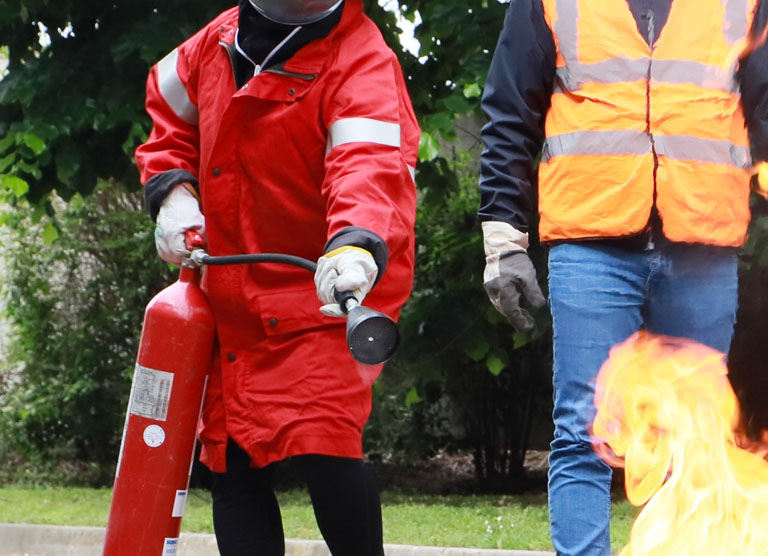Fire safety is a critical concern for every workplace. Fires can start unexpectedly and spread quickly, putting lives and property at risk. What should fire safety training cover? Are your staff confident in how to identify fire hazards and prevent fires in the workplace? If a small fire started in your workplace, could your staff help identify the correct fire extinguisher?
In this blog, we’ll discuss the key areas fire safety training should focus on and why they matter.
Preventing fires
The safest way to deal with a fire is to prevent it from happening in the first place (Health and Safety Authority, 2023). Fire safety training should teach best practices for fire prevention, including:
- Identifying potential fire hazards
- Following good housekeeping practices to reduce fire risks
When your team knows how to recognise and address fire hazards, they become empowered to maintain a safer work environment for everyone. Some common causes of fire include:
- Electrical malfunctions
- Improper handling of flammable materials
- Misuse of heating and cooking equipment
- Careless smoking
- Hot work activities
- Arson
- Discovering a fire
Despite best prevention efforts, fires can still occur. During fire safety training, your staff should learn what to do upon discovering a fire. There are many common causes of fires in the workplace. As a result, it is likely that an employee may be the first person to discover a fire. Therefore, ensuring staff know what to do in this situation is essential. What should fire safety training cover?
Training should include information on:
- Evacuation guidelines and procedures. Evacuation should always be the priority
- When to sound the fire alarm to alert others in the building
- How to assess the situation to determine if it’s safe for a trained individual to attempt to extinguish the fire
Classifying fires and choosing the right extinguisher
Fire safety training should include how to assess the risk so staff can determine if it’s safe for a trained staff member to attempt to extinguish a fire. Each class of fire requires a specific type of fire extinguisher:
- Class A Fires: Solid Materials
- Materials: Wood, paper, textiles, cardboard, plastics
- Suitable extinguishers: Water, Foam, Dry Powder, Wet Chemical
- Class B Fires: Flammable Liquids
- Materials: Petrol, diesel, oils, paints, solvents
- Suitable extinguishers: Foam, Dry Powder, CO₂
- Class C Fires: Flammable Gases
- Materials: Propane, butane, methane, natural gas
- Suitable extinguishers: Dry Powder
- Class D Fires: Metals
- Materials: Magnesium, aluminium, lithium, titanium
- Suitable extinguishers: Dry Powder
- Class F Fires: Cooking Oils and Fats
- Materials: Cooking oils, greases, fats
- Suitable extinguishers: Wet Chemical
- Electrical Fires
- Materials: Electrical equipment, appliances, wiring
- Suitable extinguishers: CO₂, Dry Powder
Our Basic Fire Safety online course helps organisations comply with legal requirements, helps ensure the safety of employees, protects the organisations property and fosters a culture of safety in the workplace.








